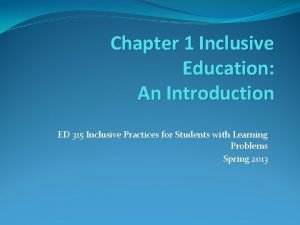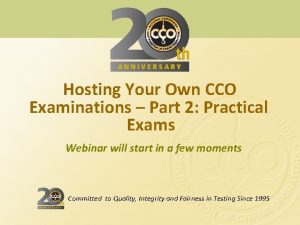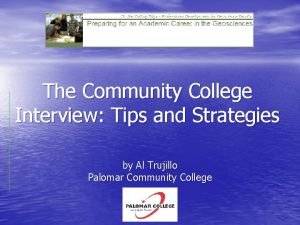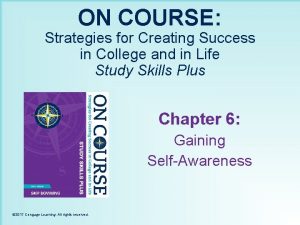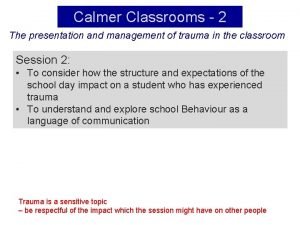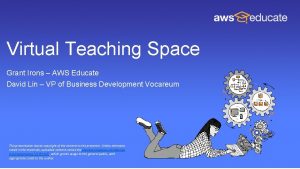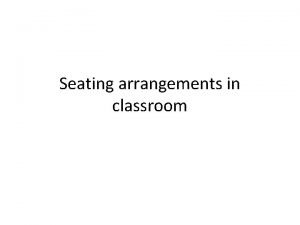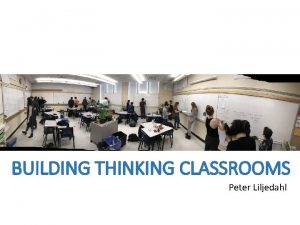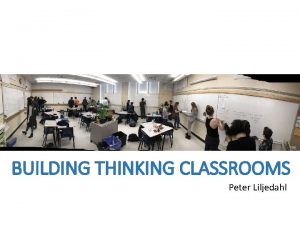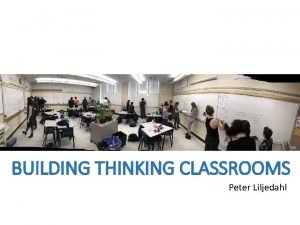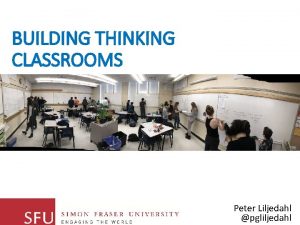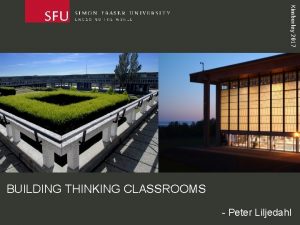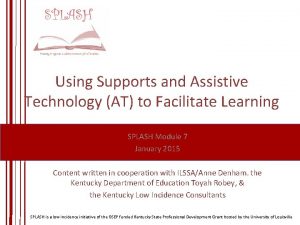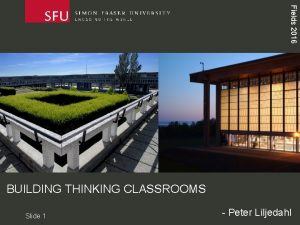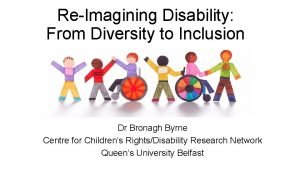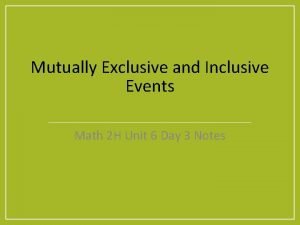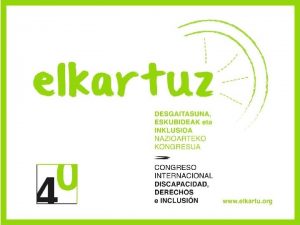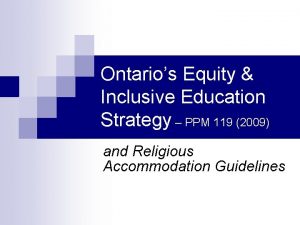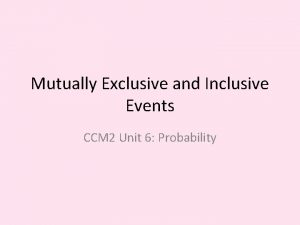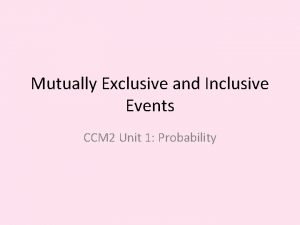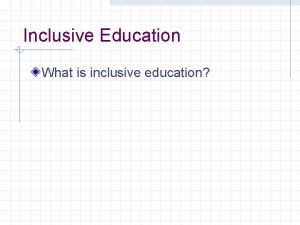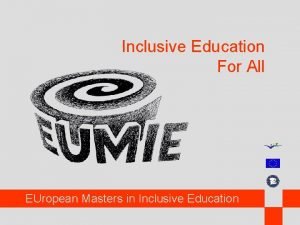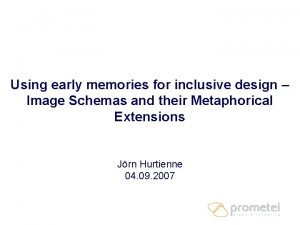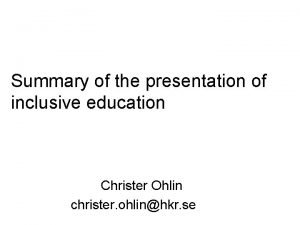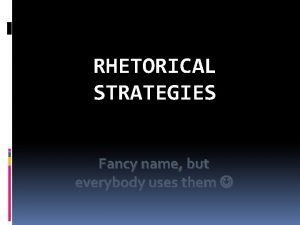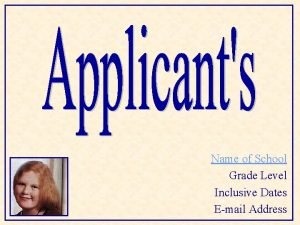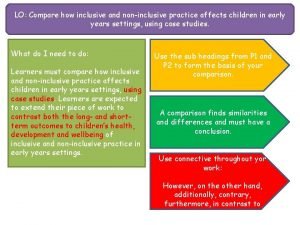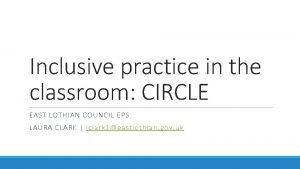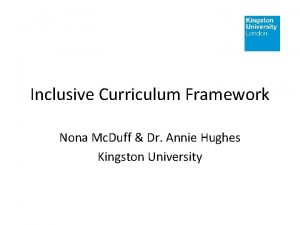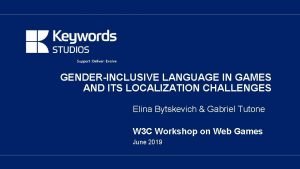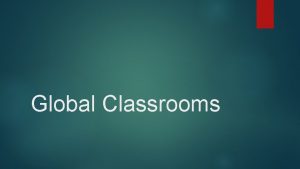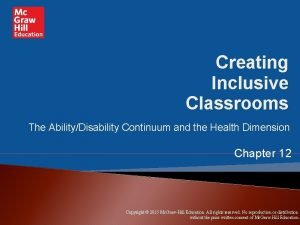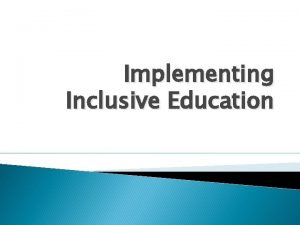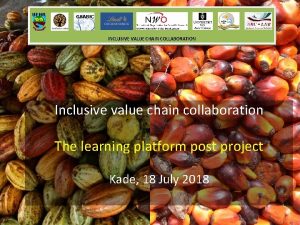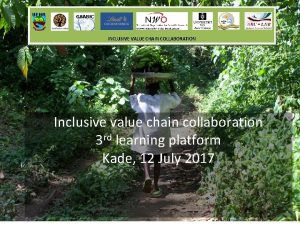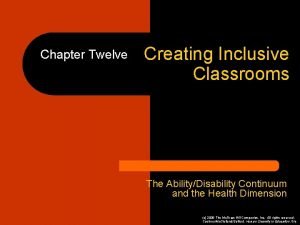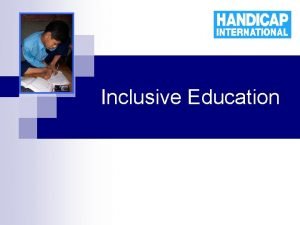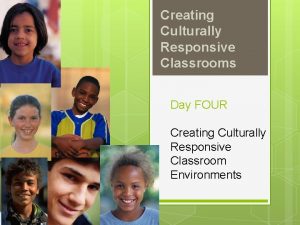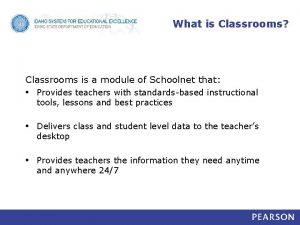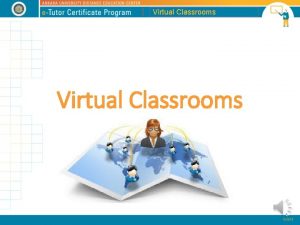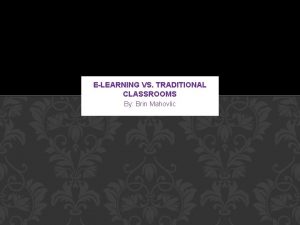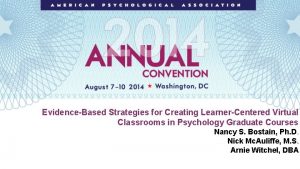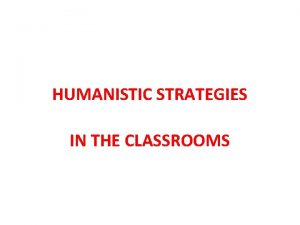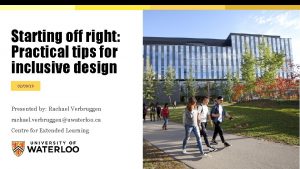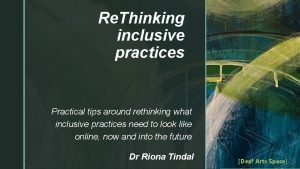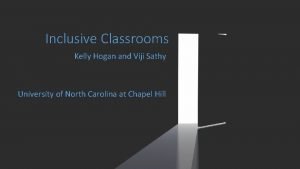Creating inclusive classrooms Challenges strategies and practical tips





































- Slides: 37

Creating inclusive classrooms Challenges, strategies and practical tips Sally Farley 24 August 2016

Today • • What is inclusion? What are Special Educational Needs? Strategies for creating an inclusive learning environment Techniques for inspiring our students and overcoming barriers to learning Creating Inclusive Classrooms

Inclusion…because… …every class is full of individuals! Creating Inclusive Classrooms

Difference Creating Inclusive Classrooms

What is the same? me Creating Inclusive Classrooms classmates

Social and Medical model of disability Medical Model Support agencies Social workers Occupational therapists Educational psychologists special schools Medication Creating Inclusive Classrooms Social Model Child centred approaches Start from individual strengths Focus on access to curriculum Integration for the benefit of the individual and all learners

Inclusion Social model • Human differences are normal • We must adapt our teaching to fit the needs of the individual So…. . If a child can’t learn the way we teach…. …. we must teach them the way they learn Creating Inclusive Classrooms

Different needs SEN • • • Communication and interaction Cognitive and learning Social, emotional and behavioural Sensory and physical Gifted and talented Creating Inclusive Classrooms

Identifying SEN General indicators < expected for their age and level • • Understanding/following instructions Difficulty concentrating/easily distracted Discrepancy between speaking and writing Difficulty starting/finishing tasks Avoiding tasks (e. g. By arguing with the teacher) Problems participating in whole class/group activities Appears not to listen/not responding to questions or instructions Problems making friends/maintaining relationships Creating Inclusive Classrooms

Creating an inclusive learning environment • Acceptance • Trust • Collaboration Creating Inclusive Classrooms

Teacher Attitude • Positive – accepting and valuing difference, seeing learners’ strengths, high expectations • Encouraging – positive marking, praising/acknowledging progress/’catch me being good’ • Flexible • Curious • Willing to learn from students Creating Inclusive Classrooms

Introvert or extrovert? • • Assumptions Biases Labelling Transference/projection Creating Inclusive Classrooms

Celebrating Difference • Naming and normalising – not ‘labelling’ • Encourage students to talk about their differences and the strategies they use to overcome them • Empathy through explaining difference • Raising awareness of impact of Sp. LDs • De-mystifying • Move from exclusion to inclusion Creating Inclusive Classrooms

Trust = a safe learning environment Learning involves taking risks: • Making mistakes • Asking for help • Being the focus of attention • Not knowing Creating Inclusive Classrooms

Emphasise and model inclusive values • Promote a class ethos that values mutual support and understanding • Buddy system • Introduce class rules that emphasise empathy and kindness • In this class we are kind and don’t laugh at other people • We listen to each other and take turns • Reinforce Creating Inclusive Classrooms

A mistake is a gift to the class Creating Inclusive Classrooms

Structure and consistency Clear expectations reduce anxiety • • • Clear classroom rules – class contract Seating plan Continuity – bridge between lessons/teachers Overview – contextualise learning Routine Boundaries – rewards and sanctions Planning! Creating Inclusive Classrooms

Be conscious of your own communication style • Face the class so that learners can see your expressions and read your lips • Use visual cues and gestures to support what you are saying • Signing • Give instructions one at a time…. …………………in the order you want them to be carried out Before you look at the exercise you need to get a clean sheet of paper Don’t leave the room until you’ve put on your coat • Say the learner’s name before asking them a question so that they know you want their attention • Avoid ambiguous language like metaphor and irony • Give the literal explanation of idioms • Always repeat any part of speech or conversation the learner does not understand Creating Inclusive Classrooms

Inclusive Language 1. You are very lazy. 2. I don’t think you tried your best on this piece of work.

From exclusion to inclusion included excluded Obstacles & fears Effort fruitful Feedback welcome Creating Inclusive Classrooms Effort fruitless Feedback ignored

Peer support – students learn FROM and WITH each other • • • Pair work/group work/buddy system Peer assessment Collaboration Warm and supportive atmosphere Encourages self-reliance, self-confidence and independence Creating Inclusive Classrooms

Collaboration • The power of the group in discussion Creating Inclusive Classrooms Up to the Challenge? How to deal with mixed ability classes. Rokus Klett. 10/2/2012

Collaborative tasks • Support differentiation by placing a high value on what children can offer to each other on a particular topic • Give learners the chance to respect each other’s views and formulate shared opinions • Develop thinking skills by discussing and paraphrasing ideas and abstract concepts and moving them about physically. • Free teaching resources Collaborative Learning Project website http: //www. collaborativelearning. org Creating Inclusive Classrooms

Social scaffolding • Teach functional language for pair/group work • Teach social skills of turn-taking, mutual support, listening and democratic decision-making Creating Inclusive Classrooms

Activating the learning cycle…. . …. and removing barriers to learning MEANINGFUL INFORMATION perceived communicated memorised internalised manipulated Creating Inclusive Classrooms

Teach from concrete to abstract Relevant Authentic Use learner’s special interests Creating Inclusive Classrooms

The Internet Learning is relevant and meaningful Some learners with SEN find abstract concepts and theories difficult to grasp. Allowing them to use the internet to look up information in class means they can • focus on actual events in real time • find solutions to real-life problems. • acquire key information instantly and receive answers to questions as they arise in class. • see how useful English skills are when surfing the internet. . Creating Inclusive Classrooms

2 -Footed Questions www. mantleoftheexpert. com Learner’s own experience Target learning

“Learning is experience…. …. Everything else is just information. ” Albert Einstein Creating Inclusive Classrooms

Preferred teaching/learning style? Visual Auditory Kinaesthetic Reading and Writing MEANINGFUL INFORMATION perceived communicated memorised internalised manipulated Creating Inclusive Classrooms

Tips Be aware of your own preferred teaching/learning style Make sure you always use multi-sensory teaching activities Encourage students to identify and exploit their own learning style Reinforce learning through different sensory channels, including imagination, emotion and enjoyment Creating Inclusive Classrooms

Creating Inclusive Classrooms

We can make sense of information Sequentially A B C Holistically WOW! Creating Inclusive Classrooms D E

Visual Strategies Diagrams Time lines Mind maps Colour Coding Top right hand side of the board Visual records Special Needs Symposium. IATEFL Glasgow Creating Inclusive Classrooms 2012

Creating Inclusive Classrooms

Kinaesthetic strategies • • • Hands-on – doing and touching Embodying Music and Movement Drama Total Physical Response Modelling clay/tracing words Creating Inclusive Classrooms

Further information: OUP Into the Classroom : Special Educational Needs OTA forthcoming online course SEN Sally Farley Student Support and Wellbeing Keynes College University of Kent Canterbury Kent CT 2 7 NZ s. e. farley@kent. ac. uk Creating Inclusive Classrooms
 Inclusive chapter 1
Inclusive chapter 1 Inner defender examples
Inner defender examples Nccco testing sites
Nccco testing sites College interview tips and strategies
College interview tips and strategies On course strategies for creating success in college
On course strategies for creating success in college Practical strategies to prevent bullying
Practical strategies to prevent bullying Calmer classrooms
Calmer classrooms Vocareum aws educate
Vocareum aws educate Best classroom seating arrangement
Best classroom seating arrangement Position paper global classrooms
Position paper global classrooms The thinking classroom peter liljedahl
The thinking classroom peter liljedahl Peter liljedahl thinking classrooms book
Peter liljedahl thinking classrooms book Thinking classroom peter liljedahl
Thinking classroom peter liljedahl Peter liljedahl thinking classrooms
Peter liljedahl thinking classrooms Peter liljedahl building thinking classrooms
Peter liljedahl building thinking classrooms Bringing the universe to america's classrooms
Bringing the universe to america's classrooms Noita eye puzzle
Noita eye puzzle Building thinking classrooms
Building thinking classrooms Reimigining disability and inclusive education
Reimigining disability and inclusive education Exclusive and inclusive math
Exclusive and inclusive math Reimigining disability and inclusive education
Reimigining disability and inclusive education Ontario's equity and inclusive education strategy
Ontario's equity and inclusive education strategy Inclusive events examples
Inclusive events examples P(a/b) formula
P(a/b) formula Inclusive education and community partnership
Inclusive education and community partnership Aims and objectives of inclusive education
Aims and objectives of inclusive education Jämförlighet
Jämförlighet Tomer owns a daycare
Tomer owns a daycare Inclusive schema
Inclusive schema Conclusion for inclusive education
Conclusion for inclusive education Rhetorical choices
Rhetorical choices What is inclusive language examples
What is inclusive language examples What is inclusive date in school
What is inclusive date in school What is non inclusive practice
What is non inclusive practice Circle participation scale
Circle participation scale Inclusive curriculum framework
Inclusive curriculum framework Role of commercial banks
Role of commercial banks Games language
Games language
